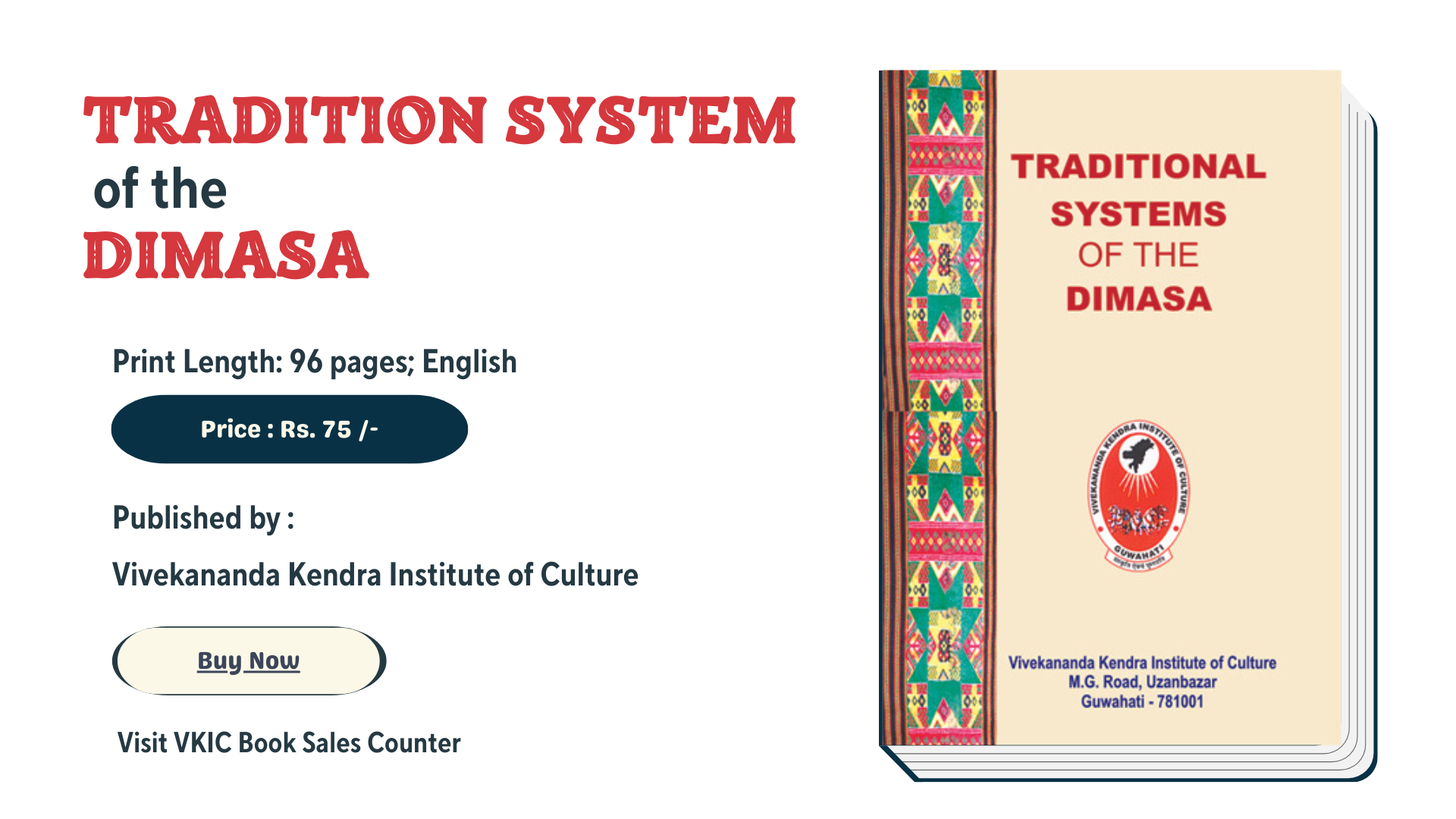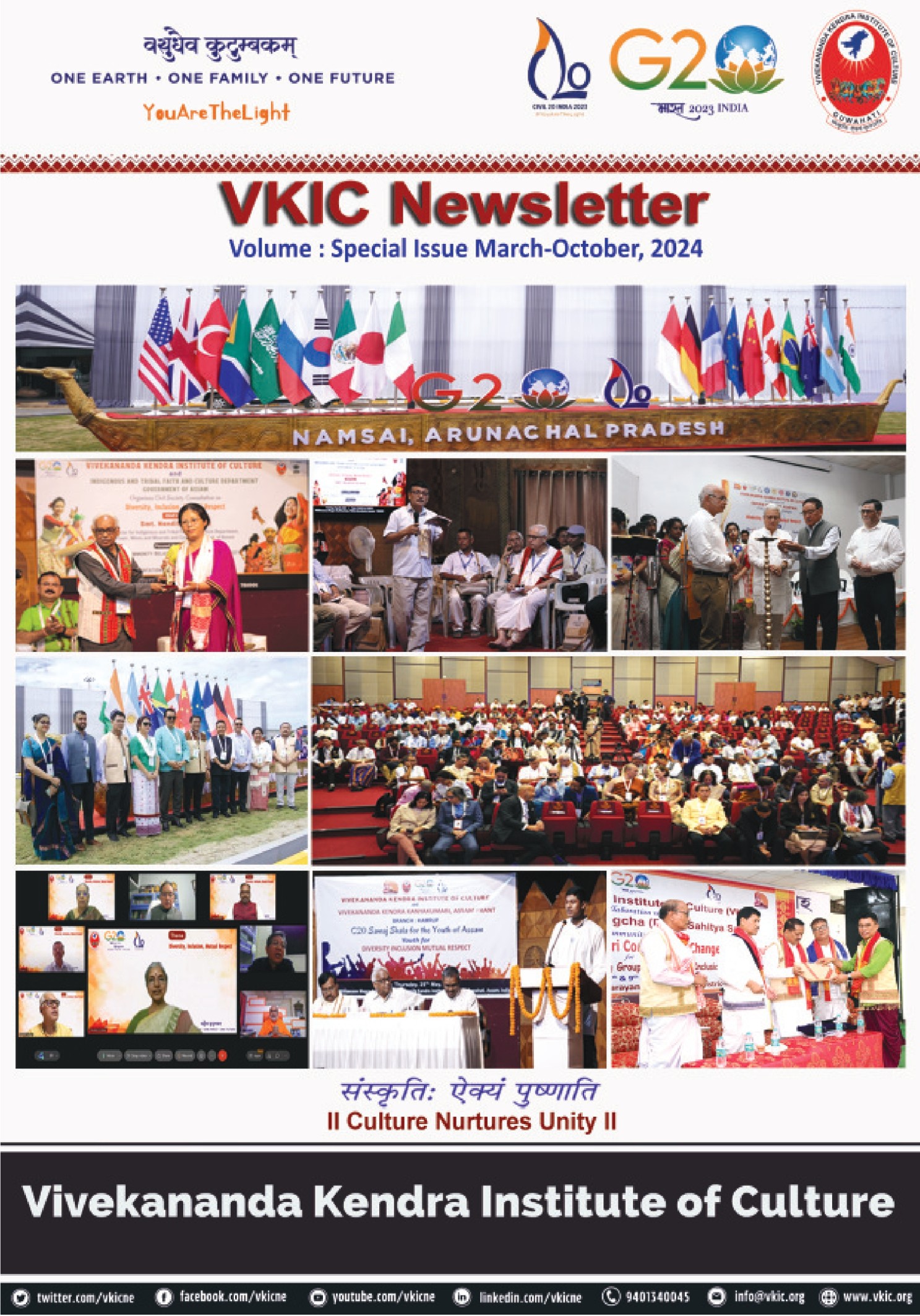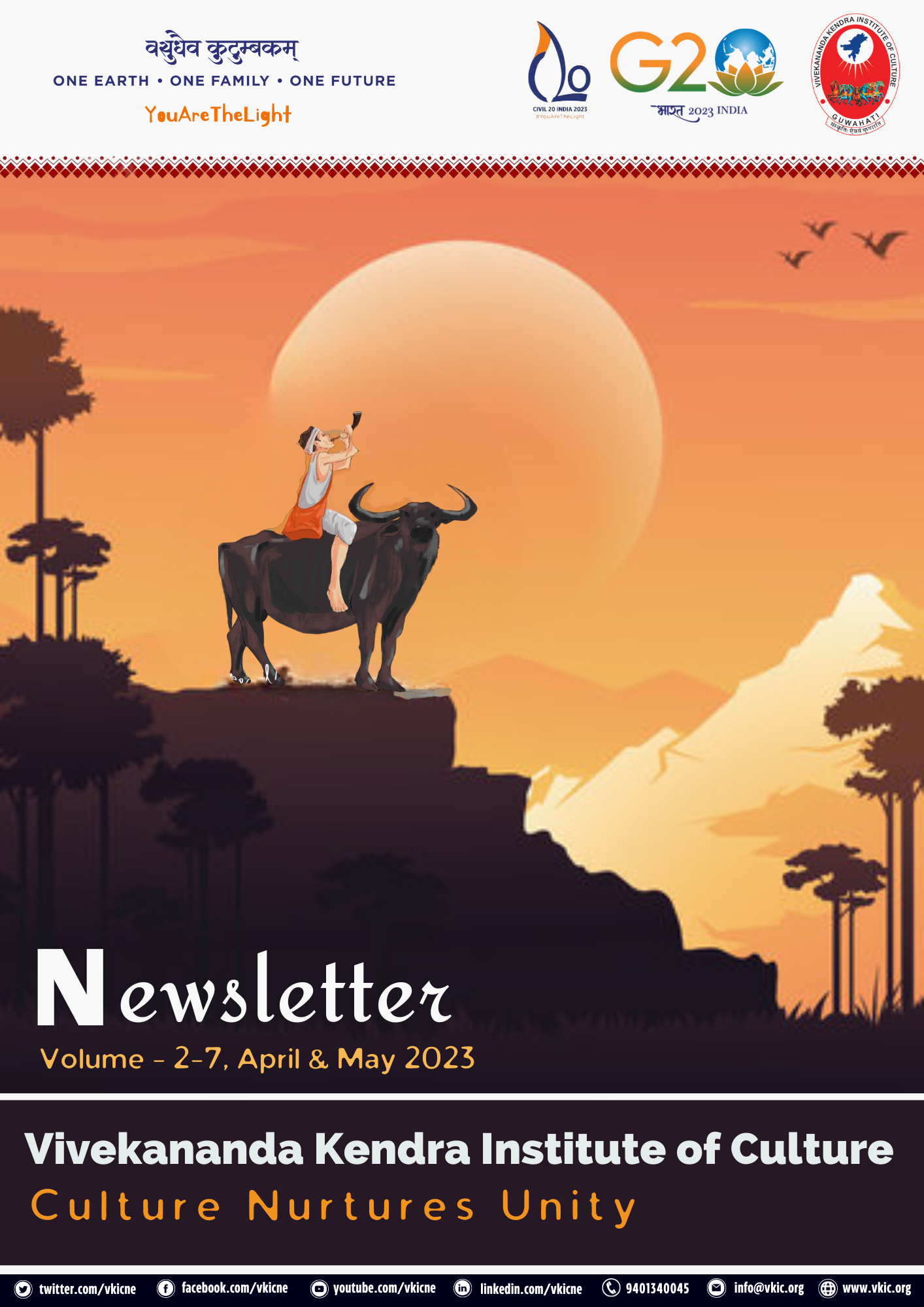Book Summary by: Sri P. Newme, Research Associate, VKIC
“The Traditional Systems of the Dimasa” is a monograph on the Dimasa community in the Dima Hasao district of Assam compiled out of the papers presented in the seminar held at Maibang, Dima Hasao erstwhile North Cachar Hills on the theme ‘Traditional Systems: Change and Continuity’. This book can be considered as an exquisite exploration into the history and life of the Dimasa. The book provides valuable insight into various aspects of the community viz. their village organization, origin and history, domestic and social life, religious life, folklores, traditional healing systems, marriage systems, festivals etc.
Divinations:
This book began with the topic of Divination which is a spiritual idea to sanctify a life by homage to the divine showing a constant search for the truth to cultivate religious sanctity. This closely observes how the divination is restored among the community. The various forms of rituals are performed by Jonthai (Priest). The Dimasa Kingdom is further divided into twelve religious units headed by Jonthai, and the priest clan in the areas they headed. It lucidly explains the rituals, role of Jonthai, taboos, and restrictions which also explained in detail about the “Daikho” which meant a House of God.
Village Organisations:
Village organization, origin and settlement of villages, migration, boundaries and layout of the village, composition of the village headed by Khunang (Gaonburah) in the Dimasa society are also explained in the book. It vividly tells us the power, functions and role of the Khunang. The power exercised by the Khunang is immense in the Dimasa community.
Traditional Healing Systems:
The chapter on traditional Healing system is as fascinating as it always been so because it is a part of the traditional systems of all over the world. Traditional Healing is an outcome based on knowledge, wisdom, skills, experience and on beliefs and faith which have been in practice to cure diseases since time immemorial. This monologue describes some aspects of traditional healing of the community based on the magical process to cure and predict the future which they called as Sma Naiba and which has its own unique method. And it is seen that not only the Dimasa community but almost all the communities in Northeast have rich knowledge about the traditional healing systems.
Festivals:
It also comprehensively covered an important festival of the Dimasa, named the Busu. Busu is said to be celebrated in three ways- Hangchew, Surem, and Jidap. The festival includes rites and rituals which last for seven days. The book revealed that Surem and Hangchewmenonba are the most important dances and describe its steps and a series of movement associated with the dances.
The richness of Dimasa in traditional cultural knowledge is elaborated in the book where their history has been resonated since the time of Mahabharata. They belong to the larger Kachari group known as Kirata which finds mention in the Mahabharata. And later formed their own Kingdom in the Brahmauptra valley, Dimapur, Maibang and Khaspur and their last king was Govind Chandra Hasnu. The remains of ruins are preserved in Khaspur, the last capital of the Kingdom.
Oral Tradition:
The Dimasa rich oral narratives and folklore which include folktales and fairy tales, legends, epics, chants, ballads, proverbs or wise saying and mythologies is mentioned in this book. The legend says Dimasa are the descendants of Mahabharata’s Ghatotkacha. Bhima, the second son of Pandu came to Kamrup and married Hirimba and they bore a son Ghatotkacha.
Clan:
Family and kinship which is another important aspect, is described in details in the book. The society of the Dimasa, including family structures, codification of Sengfongs (Patriclan) and Julu (Matriclan) and also description about the inheritance of property by sons and daughters are discussed. Notes on clan systems, about marriages systems like endogamy and exogamy, proposal, acceptance etc are well narrated in the book.
As a whole this book is a treasure in terms of ethnographic exploration of Dimasa of Dima Hasao district which has rich cultural heritage by the writers with in-depth knowledge of the community that connect the commonalities shared among different communities also all over India and their way of life which became the lifestyle of the North Eastern region of Bharat.
Thank You



